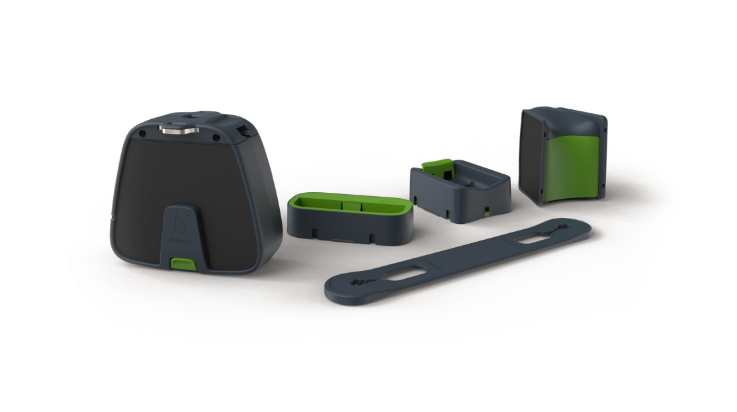Key factor 1: collar models
Our collars come in two models: one for Cattle and one for Sheep and Goats. One of the key differences between them is the battery size, which directly impacts how long the battery lasts between charges. For instance, the cattle collar has a larger battery pack.
Cattle collars:
Producers seldom need to charge batteries during the grazing season.
Sheep and goat collars:
Producers should generally plan for charging batteries at least once through the grazing season.
Key factor 2: location & sunlight exposure
Location also plays a big role. Both collar types use solar panels, but sunlight levels vary significantly across US regions and seasons. If you live in a state or region that feels like year-round summer with an abundance of sunlight, you may never need to recharge the batteries manually. Producers in regions who experience the winter season with limited sunlight conditions may need to plan for battery swaps if you are grazing through the winter months.
You can read more about what factors influence battery consumption below.
- The size of your herd
- How accustomed the herd is to being handled.
These two factors naturally correlate.
Producers with a relatively small herd, accustomed to being handled regularly, we recommend keeping a few fully charged spare batteries nearby. That way, you can simply swap out the battery with the lowest charge whenever you are handling your livestock. That way you won't need to plan for a larger round of swapping batteries all at once.
Producers with larger herds that are less accustomed to handling will need to utilize a livestock handling system, such as a corral and squeeze chute. If possible, plan to execute battery swaps when the herd is handled for other reasons, such as seasonal veterinary care.
The collar's location needs to be more accurate near the pasture boundary therefore it uses more power. In small pastures, livestock spend more time near the boundary, ultimately consuming more battery.
Each collar has solar panels that recharge the battery while on pasture. Charging works best in open, sunny areas. In hot weather, however, animals may seek shade, which reduces charging efficiency.
Nofence collars use the cellular network when the collar interacts with you via the app. In areas with poor coverage, the collar uses more power searching for a signal. Read more about the collars and cellular networks here.
Power use can vary between animals. Collars on those that roam more or test boundaries tend to drain faster than on livestock who stick close to the herd, keeping their distance from the boundary. Each animal’s behavior affects battery life.
Depending on how often you refresh the position of livestock and if you choose to activate Power Saving mode or not, battery life varies.
Read more about Power Saving Mode here.
The more often you edit pastures or move animals between pastures, the more battery the collars consume.
The majority (80%) of Nofence producers in the USA graze almost the entire year.
|
Large sized pasture |
Medium sized pasture |
Small sized pasture |
| Lasts full season |
Monthly rotations: lasts full season |
Weekly rotations: lasts 6 to 12 months |
The majority (80%) of Nofence producers in the USA graze almost the entire year.
|
Large sized pasture |
Medium sized pasture |
Small sized pasture |
| 1- 2 charges per season | Monthly rotations: 2 charges per season | Weekly rotations: 2 to 3 charges per season |
| Large sized pasture (larger than 120 acres) | Medium sized pasture (10 - 120 acres) | Small sized pasture (smaller than 10 acres) |
|---|---|---|
| Lasts full season | Monthly rotations: lasts full season | Weekly rotations: lasts 6 to 12 months |
| Vallados amplios (más de 50 hectáreas) | Vallados medianos (5-50 hectáreas) | Vallados pequeños (menos de 5 hectáreas) |
|---|---|---|
| Una carga por temporada | Rotaciones mensuales: 2 cargas por temporada | Rotaciones semanales: de 2 a 3 cargas por temporada |
Learn more about if Nofence is right for you
Sign up to get updates, tips, and stories from farmers using Nofence.




